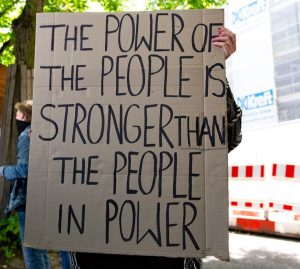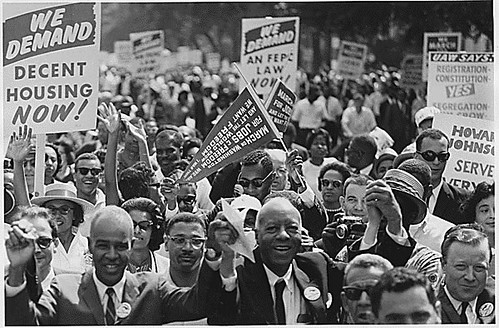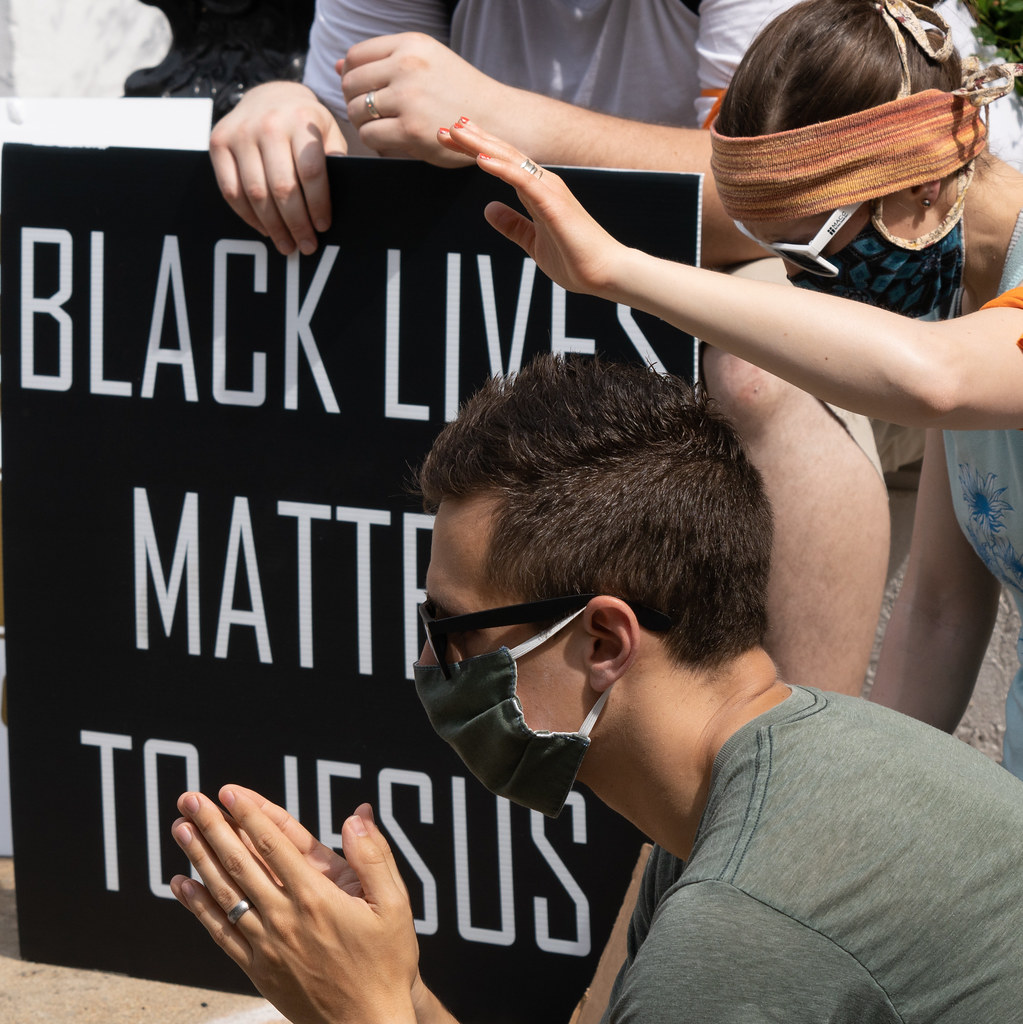Home » Unitarian Universalism
Category Archives: Unitarian Universalism
Sara Morrison Neil: Steering Committee Member
 I recently joined the UU Class Conversations Steering Committee. I am currently the Church Administrator and Membership Coordinator at First Parish in Framingham UU. My career has been in nonprofit administration, starting back in 1992 at the AIDS Action Committee in Boston. I also facilitate the Diversity and Equity Exploration Team at the congregation, which grew out of years of regular discussion groups, and I felt was long overdue. The group successfully led a campaign for the congregation to adopt the 8th Principle and have struggled figuring out how to meet people where they are at and move them further in their understanding of racism and systemic oppression. We’ve led book discussions, movie discussions, article discussions and trained ourselves for a Listening Project, and became trainers for active bystanders.
I recently joined the UU Class Conversations Steering Committee. I am currently the Church Administrator and Membership Coordinator at First Parish in Framingham UU. My career has been in nonprofit administration, starting back in 1992 at the AIDS Action Committee in Boston. I also facilitate the Diversity and Equity Exploration Team at the congregation, which grew out of years of regular discussion groups, and I felt was long overdue. The group successfully led a campaign for the congregation to adopt the 8th Principle and have struggled figuring out how to meet people where they are at and move them further in their understanding of racism and systemic oppression. We’ve led book discussions, movie discussions, article discussions and trained ourselves for a Listening Project, and became trainers for active bystanders.
I attended two UU Class Conversation workshops at First Parish in Framingham. I had already been wrestling with understanding how class functions in the country and where I fall in the class hierarchy, so I found it tremendously helpful to have a way to get a handle on it. The first workshop helped me figure out where I fell in the class hierarchy.
I started out thinking class was primarily about money but knew that wasn’t all of it. I have a master’s degree in public administration but have never had a high salary. My husband, on the other hand, did not graduate from college and earns twice what I do. I was raised with middle class values and expectations, and had privileged grandparents and great grandparents. My family background includes people in poverty, working class, middle class and even some very wealthy.
Because some family members started out their life working class and then worked their way up, I was confused as to what class they were. I was surprised to find that I have had a lot of class privileges, even though my immediate family has never been wealthy. My father’s side of the family had several generations of college graduates and professionals, my father’s mother came from what would be called the owning class. Both my parents are college graduates, and high expectation for education.
My mother’s foster family is working class and poor and were on welfare when they took my mother and I in when my parents split up. I learned what it felt like to go to the school bus stop and have people think less of you because the house you live in is not in great shape. I learned about people whose lives were suddenly upended because they were laid off. I learned about people who were focusing on enjoying the present rather than always living for the future. It was a short period of my life but it made an impression.
Later on, I got a scholarship to go to a private high school. Then I saw people with much more privilege, who laughed at me for walking to school, who dressed in ways I could never keep up with and I developed a deep sense of resentment. My stepfather’s family was in the working class, and my grandmother did not approve of him exactly because of his farm background, even though her family had modest beginnings. My husband’s family is working class. I quickly learned that at family gatherings people did not talk about their work, they talk about sports, food, hobbies and they play games. And if they talked about work, it was usually just to vent.
When I started attending First Parish in Framingham around 2010, I read that the average pledge was $1,200. That was way beyond what I expected or could afford. I interpreted that to mean I could not become a member. Eventually—actually during my job interview—I was told that you didn’t have to give that much. In my role as Membership Coordinator, I made sure never to scare anyone away because of their financial circumstances.
The Canvass Committee can get into great detail about it all, but I always say that while we expect members share their time, talent and treasure, that the amount of any those is different for different people, or at different stages of their life. As I have been learning from UU conversations in the second workshop and on the website and book, there are many other areas that congregations need to take stock of and change what is exclusionary.
When cofounder Denise Moorehead asked me to join the Steering Committee, I wanted to be able to use my skills and knowledge to help make some real change in the world, beyond the small pond I am in. I offer my curiosity and empathy, along with my knowledge of a UU congregation.
Meet Eli Poore
Eli Poore is one of the newest UU Class Conversations’ Steering Committee members. They bring a grounded perspective in the ways we can better serve those with less class advantage and new ways to bridge class divides.
I’m currently serving as an intern minister for the Southern Oregon UU Partnership, which includes congregations in Ashland, Grants Pass and Klamath Falls, Oregon.
For the past eight years, I’ve been involved in an ongoing street ministry/community development project with communities experiencing poverty and houselessness through a nonprofit organization that I co-founded with a friend and mentor to support our work, Coastal Bend Community Empowerment. The work with the unhoused community has been particularly successful. It began with the “Unsheltered Voices Listening Project,” funded in part by the UU Funding Program, and involved utilizing a relationship-based community organizing framework centered on the gifts and goals of the community to mobilize and make change. We were able to unify and mobilize community members and through a listening process identified goals that were important to this community.
This project has grown into a wider initiative to end houselessness citywide, and now involves interfaith groups, housed partners, service providers, and is supported by city and county leaders. But the voices of the houseless neighbors remain at the center. They have come together to partner on neighborhood beautification initiatives and monthly beach cleanups in partnership with other groups. Additionally, they have held fundraisers that provide direct support to unhoused community members for things like obtaining IDs, temporary housing, busfare, etc.
Building Equitable Relationships
I completed a community ministry internship that sought to build relationships between housed and unhoused neighbors, moving into more relational frameworks and out of one-sided charity frameworks, which perpetuate power imbalances. I also served as a founding board member, and Director of Community Development, overseeing a small paid staff and volunteers in our wider community development and training iniatives, which included poverty simulations and “power shift” and “mission shift” trainings for churches and nonprofits.
I have experience in organizational development, strategic planning, fundraising and marketing in both the nonprofit and for-profit sectors. I am also involved in the trans UU professional group “TrUUst.” During my involvement on the TrUUst board, we have secured and increased our funding from the UUA twofold, as well as developed a wider fundraising plan involving support from members and congregations.
During seminary, I had my own marketing and web design business, specializing in web development, marketing and social media management for nonprofits and small businesses.
I’m also involved in the national leadership team of Faith in Harm Reduction, which promotes harm reduction initiatives grounded in a faith-based perspective. Harm reduction practices include safer use supplies, but also things like housing first and centering the voices and perspectives of people experiencing structural violence in an intersectional way. My doctoral program is focused on building a theological framework for harm reduction practices, and I aim to create a UU Harm Reduction Coalition in time.
“I have a love for developing and growing organizations and organizational systems, and I think that class issues should be discussed more robustly in our denomination.”
Class Issues in the Real World
Class issues are important to me for a number of reasons. I come from a working class background and have been directly impacted by classism, poverty and my experience of houselessness. I’ve confronted classism directly not only in UU congregations but in the wider world.
I also experienced class issues in the context of carceral systems, being formerly incarcerated too, seeing how race, class and other identities come together in the likelihood of an individual’s contact with carceral systems as well as the outcomes of that contact, which perpetuate intersectional disparities and has for decades now devastated whole communities. I’ve seen how my privilege as a white person has manifested in all of these experiences, providing a boon for me in some aspects, as well as the way classism has presented through systemic, interpersonal, and personal disadvantages and biases.
Why do I look forward to serving on the UU Class Conversations Steering Committee? I have a love for developing and growing organizations and organizational systems, and I think that class issues should be discussed more robustly in our denomination. This is particularly important given the general demographics of most UU congregations and organizations which skew white, educated, and middle to upper middle class. This can leave out many who have much to give to our movement.
Eli Poore, M.Div MA NCPRSS
D.Min Student, Harm Reduction and Faith Communities, Street and Urban Ministries
(Pacific School of Religion/Graduate Theological Union)
Leadership Committee, TrUUst (www.transuu.org)
National Leadership Team, Faith in Harm Reduction (www.faithinharmreduction.org)
(they/them;xe/xem)
Down with CRT?
“George Floyd protest” by vpickering
Critical Race Theory, or CRT, is an academic and legal framework that denotes that systemic racism is part of American society — from education and housing to employment and healthcare. Critical Race Theory recognizes that racism is more than the result of individual bias and prejudice. It is embedded in laws, policies and institutions that uphold and reproduce racial inequalities.
— Legal Defense and Educational Fund, Inc.
Critical Race Theory, or CRT, became the new rallying cry for people on the far right in 2021. A year before, there were rumblings against the highly academic and legal framework. But the rhetoric reached an entirely new level when then-President Donald Trump signed an executive order in 2020 prohibiting federal agencies from conducting diversity, equity and inclusion training. He justified his order by claiming that such training represented reverse racism and were part of the left’s efforts to indoctrinate people into its way of thinking through CRT.[i]
By falsely calling any discussion of racism, white supremacy, inclusion and/or equity CRT, those spreading this false narrative have succeeded in convincing even moderates – and not a few liberals – that the concept is divisive and harmful for children and harmful for American society as a whole.
Causing Harm and Shame
According to Florida Governor Gov. Ron DeSantis, CRT teaches kids to hate each other and is “state-sponsored racism.” Texas Senator Ted Cruz suggests that CRT causes white children to feel shame, shame that some of his fellow conservatives say can cause mental illness in these children. According to Spectrum News, Cruz tells fellow conservatives that they can spot CRT in texts that use the word “equity” frequently.
Armed with this misinformation, thousands of parents have stormed school committee meetings across the United States. The situation became so extreme that Reuter’s news agency commissioned a study on the issue. It reveals that more than half of the 31 school boards contacted said they had added extra security at meetings, limited public comment or held virtual meetings when in-person gatherings became too chaotic. (The 31 school boards contacted were just a microcosm of those actually affected.) In Loudoun County, Va., a letter was sent to one of the adult children of Brenda Sheridan, a school board member. It threatened to kill Sheridan and her child unless she left the board.
Sadly, the disruption has been rewarded. According to a Time.org April 14, 2022, article, 42 states have introduced bills or taken other steps that would restrict teaching CRT or limit how teachers can discuss racism and sexism. Seventeen states have imposed these bans and restrictions either through legislation or other avenues. Some ask parents, teachers and/or administrators to “turn in” teachers or professors who teach CRT or some of its supposed concepts. Voice of America reports that a bill passed in Indiana “permits parents to bring complaints and legal action against schools.”
But is CRT actually causing this harm and shame or is it our country’s inability at best and outright refusal at worst to deal honestly with racism and the long-term results of white supremacy?
I argue that in the hands of people like Cruz and DeSantis, CRT stands for Conservatives’ Revisionist Truthlessness.
Unintentional Truth?
Dr. Greg Ganske, former congressman from Iowa and a vocal CRT critic, seems to contradict his own anti-CRT stance when he argues that CRT has two common themes. According to Ganske, CRT maintains that white supremacy preserves power through the law, and the relationship between law and racial power must be transformed.
But maybe Ganske is simply being honest. As a plastic surgeon and former political operative, he has benefited from the power that white supremacy has brought him, and perhaps he does not want laws to change to level the playing field and provide the dreaded “equity” that those waging war against CRT malign and fear.

CRT foes fear the racial awakening brought about by the murder of George Floyd. For many white Americans, the Floyd video was the first time they saw the effects of the raw racism that has plagued our country for centuries. As they marched through the streets, white Americans and others around the world committed to ending racism and white supremacy, understanding the damage that racism does to them as well. That commitment sparked fear in the hearts and souls of people who believe that the end of white supremacy will siphon off their power.
Personally, as someone who works on issues of class and racial justice, I do not see equity through a zero-sum lens. I do not believe that because you have enough I must go without the things that I need. I think we can both have our needs met – with enough left over for getting not only what we need but some of what we want also.
I do believe, however, that some people, institutions, nations or world regions might take so much that there is little left. That is where CRT comes in and provides a process by which we can make America, and the rest of the world, truly great.
How Does CRT Work?
When Kimberlé Crenshaw, a law professor at UCLA and Columbia, coined the phrase Critical Race Theory in 1989, she saw it as a tool to explain how laws and legislation in the United States are deeply rooted in systemic racism. [ii]
For example, in the early 1700s, shortly after the first Africans were brought to the United States, laws were passed to make it illegal for enslaved people to learn to read and write. Slavery was enshrined in the Constitution in 1787. The Naturalization Act of 1790 denied citizenship to anyone who was not white. The 1800s alone, saw the passing of myriad anti-white legislation, including the Chinese Exclusion Act, Indian Removal Act, Jim Crow laws and many more.
Racist laws continued well into the 1900 and 2000s. One example of this is the game-changing legislation that provided housing loans for WWII GIs. Written into the legislation was language explicitly denying loans to African American veterans. Another example? Alabama did not alter language that prohibited miscegenation until 2000.
Recent anti-CRT laws are just the latest in legislation intended to continue inequity and racism. But instead of causing division, CRT helps us understand that racism is indeed baked into the history of the United States and provides the framework that can help us bring about racial healing together as a community.
The Way Forward
Seeing exactly how laws and societal practices have normalized and institutionalized racism allows us to craft legislation which can undo the harm caused. Just as important, it helps us face the truth as a nation, see the scope of the problem and change practices – and hearts – as well. In the words of Mari Matsuda, a law professor at the University of Hawaii and an early developer of critical race theory, “We have a serious problem that requires big, structural changes; otherwise, we are dooming future generations to catastrophe.”[iii]
Ultimately, CRT will have the opposite effect of the one fear mongers predict. Instead of making white children and people feel bad, it will motivate them to continue to work with BIPOC peers to help the United States to live up to its ideals. We can be the shining beacon for the world that the writers of the Constitution – despite their own shortcomings – envisioned for the generations before them.
And, yes, I am down on the way some people use CRT, when it mean Conservatives’ Revisionist Truthlessness.
[i] Center for Law and social Policy: https://www.clasp.org/blog/how-abolishing-critical-race-theory-preserves-white-power/
[ii] Ibid
[iii] Critical Race Theory: A Brief History, New York Times: https://www.nytimes.com/article/what-is-critical-race-theory.html
Unity Based on Justice
 In July of 2020, UU Class Conversations published the blog post The Time to Unite as One America is Now about police brutality and the systemic oppression of Black and other people of color throughout the United States. It focused on how the deaths of black and brown men and women by police officers sparked international protests. The protesters were labelled terrorists, thugs and unpatriotic by some conservative media outlets and politicians.
In July of 2020, UU Class Conversations published the blog post The Time to Unite as One America is Now about police brutality and the systemic oppression of Black and other people of color throughout the United States. It focused on how the deaths of black and brown men and women by police officers sparked international protests. The protesters were labelled terrorists, thugs and unpatriotic by some conservative media outlets and politicians.
Just a few weeks earlier, some of the same media outlets and politicians had proffered a very different response when heavily armed, mostly White, protesters stormed the Michigan capitol building, threatening to kidnap and possibly kill the governor. Why? The rioters were upset about stay-at-home orders during a pandemic.
These protesters were called patriots. Police stood down, the National Guard was not called in to quell the unrest, and there were no arrests, no tear gas deployed, and no curfews imposed and enforced. Both times Americans were exercising their First Amendment rights. Yet, there were very different outcomes and consequences for those protesting.
Down a Dangerous Road
Well, fast-forward less than six months later and due to a steady stream of falsehoods and conspiracy theories from politicians, including the lame duck U.S. president about the legitimacy of the presidential election, a mob of armed white supremacists were incited to attempt an insurrection of another American Capital building. The intent was the same: Harm the legislature, including the vice president, speaker of the House and members of the House and the Senate. This time, the riot was deadly and dozens of police officers were injured and six people have died: All this in America.
Using Racial Tropes to Obscure Class
Why? Well, the idea that real Americans can only look a certain way and cannot be immigrants or people of color or a different religion. Many Americans overwhelmingly ignore the fact that class inequalities are not just part of the black or brown experience but a struggle for all Americans who are low-income or working class. This is increasingly true also for middle class people. This ingrained belief keeps many lacking class privilege from joining others of a different race or religion and undercuts any potential unity across racial lines.
There is little self-reflection for most Americans on how their class differences shape their backgrounds and unique attitudes and behaviors. Few consider how these class differences actually can bridge racial and religious divides, if explored. The class designation is overshadowed by the ever-present racial divide. So much so that economic initiatives often proposed by progressive or moderate politicians are viewed as handouts or bailouts by certain Americans. Stimulus checks, for example, are considered nonessential because they would go to the undeserving.
The idea that those with less class advantage are lazy is often intentionally conflated as coded messages about immigrants and people of color and creates an us versus them paradigm. Imagine, if people living in poverty and those in the working and middle class actually recognized that their commonalities outweigh their differences?
Our Truth
Some White poor and working class people continue to believe that they have more in common with others of their race who have substantial class privilege than they do with black and brown people of limited privilege. They have bought the idea that the We (Whites of all classes) have to stick together to protect our country, our flag, our families and our country’s traditions as Whites – despite economic differences. It’s imperative, or the them will take over, and as the neo-Nazi chant in Charlottesville suggested, they will erase us.
The idea that the votes of people of color are less legitimate than those of Whites is a shameful part of American history that is still alive and why insurrectionists carried Confederate flags through the Capital buildings during both riots.
With the current (and much-needed) focus on racial differences, Americans overwhelmingly are unable to recognize class and classism. Moreover, American economic and political systems that widen the income gap are rarely challenged in substantive ways. The status quo is the gold standard, and U.S. policies and practices routinely benefit the wealthy and affluent at the expense of other Americans.
Until we as a nation wake up and realize that the status quo is not working for most Americans, we are destined to routinely make the same choices that continue to divide us. And, if the latest insurrections teach us anything, there is a growing angry and violent group of Americans who, if not addressed, are intent on ripping the country apart.
But there is much cause for hope in the coming months. The end of the coronavirus – while still distant – is finally in sight. The fervor of the racial justice movement is still high. New federal leadership has said it is committed to addressing class inequities and white supremacy. So, in our UU congregations and organizations let’s heighten the meaningful dialogue – and act upon – racial and class justice.



